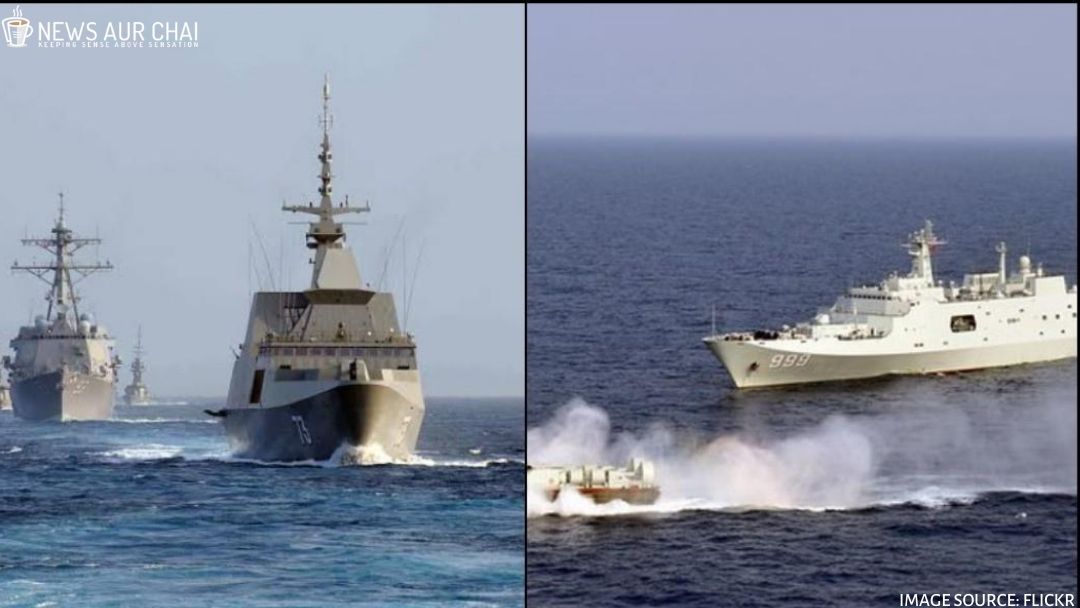
China is seemingly dealing with different troubles this year — Coronavirus pandemic, the trade war with the US, national security law of Hong Kong, various economic issues, and others. In addition to these, serious tensions have cropped up with the USA regarding the South China Sea. The US Secretary of State, Mike Pompeo has called out China’s claims over the South China Sea to be unlawful.
China’s relations with major South East Asian countries are also worsening due to Beijing’s aggressive policy of claiming territories without paying any heed to international law. Philippines publicly called on China to abide by the decision of the Permanent Court of Arbitration at the Hague, Netherlands, in 2016, which invalidated China’s massive claim over the resource-rich South China Sea.
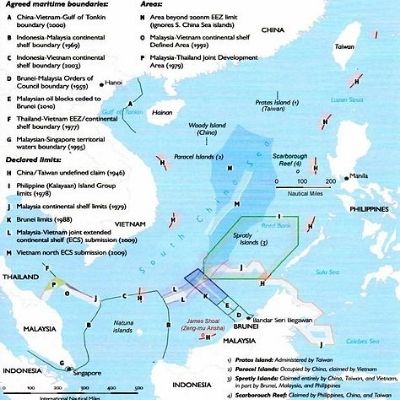
Background:
The South China Sea has been a bone of contention since the 1970s, between countries which extend their claims over its small islands like the Spratly Islands, reefs and vital shipping lanes full of resources. China’s assertive claims of sovereignty over the sea, its estimated 11 billion barrels of untapped oil and 190 trillion cubic feet of natural gas, have not been taken positively by the country’s fellow competitors Indonesia, the Philippines, Malaysia, Brunei, Vietnam and Taiwan.
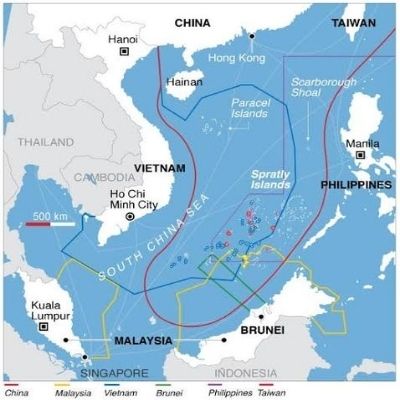
Stance of South-East Asian Countries:
Complying with the obligations of the Philippines and China under the international law and United Nations Convention on the Law of the Sea (UNCLOS), the country’s Foreign Secretary, Teodoro Locsin Jr. said, “The Tribunal authoritatively ruled that China’s claim of historic rights to resources within the sea areas falling within the ‘nine-dash line’ had no basis in law.
Instead, claims to historic rights, or other sovereign rights or jurisdiction that exceed the geographic and substantive limits of maritime entitlements under UNCLOS, are without legal effect”. However, China does not recognize the authority of the court, thereby disregarding the judgment.
The intrusion of Chinese coastguard and navy ships into Malaysian waters in the South China Sea 89 times between 2016-19, has been reported. A Chinese marine survey vessel backed by China’s coast guard and navy disrupted a Malaysian oil exploration project in the conflicted waters, where the Chinese coast guard had also rammed and sank a Vietnamese fishing vessel.
Japan has also reprimanded China’s unjustified territorial claims amid the Coronavirus pandemic and accused of spreading propaganda and misinformation while providing medical aids. The country’s annual defence review noted that China is relentlessly intruding disputed waters of the East China Sea and the South China Sea by establishing administrative districts around disputed islands, prompting other countries to react.
China’s Reclamation of Land:
In recent years, China has increased its efforts to reclaim land in the South China Sea by building up its military presence to backup its alleged ownership. It has piled sand onto existing reefs, constructed ports, airstrips and military installations, especially in Paracel and Spratly Islands. It has also deployed fighter jets, cruise missiles and radar system in Woody Island, thereby militarizing it.
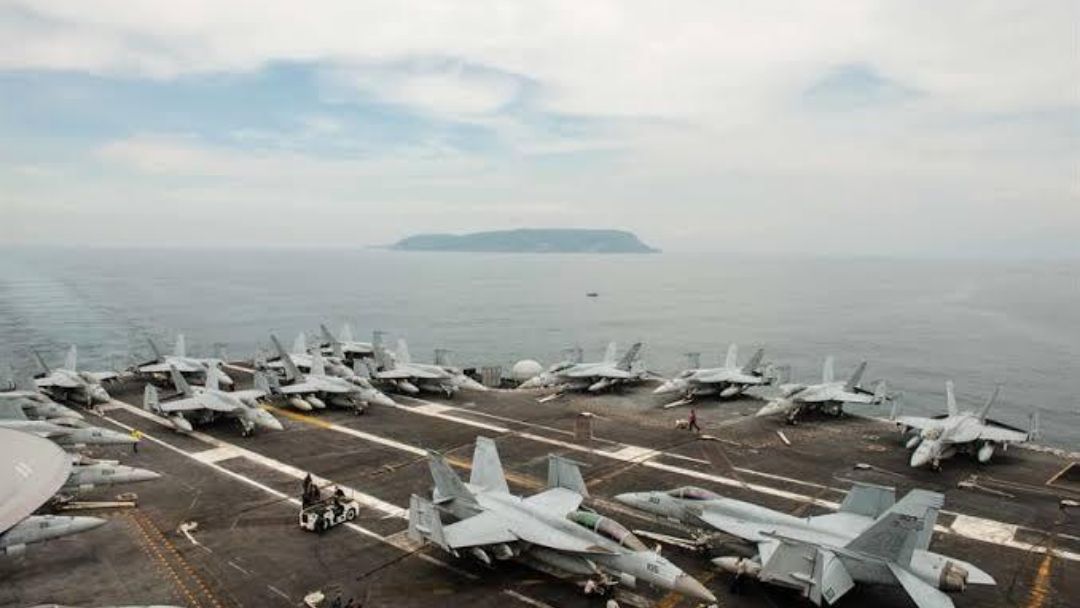
Admiral Harry Harris, Forget Commander of US Pacific Command, referred to it as the “Great Wall of Sand”, a “nine-dash line” creating a protective ring and supply network around China’s sea territory, like the Great Wall of China does on land.
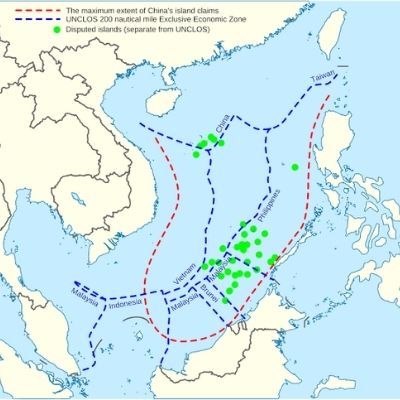
The military facilities on the islands include naval berths, hangars, 3000m runways, reinforced ammunition bunkers, radar sites and missile silos. Apart from these, accommodation blocks, administrative buildings, hospitals, sports complexes, internet services etc. have been set up, turning the islands into Chinese residential areas.
The South China Sea serves as a bastion for Chinese seaborne nuclear deterrent based on Hainan island as well as a gateway for the Maritime Silk Road, part of China’s Belt and Road Initiative. China has also erected 200-tonne commemorative boulders quarried from the stone of Mount Taishan, symbolic of unbroken Chinese civilization for thousands of years, on three biggest island bases of Spratly Islands, resonating with President Xi Jinping’s Dream of national rejuvenation.
US Retaliation:
Responding to China’s aggressive advances, the US has deployed USS America, an amphibious assault ship of its navy, two navy-guided missile destroyers–USS Bunker Hill and USS Barry, two aircraft carrier strike groups–USS Nimitz and USS Roland Reagan for joint operations in the troubled waters, which have been joined by an Australian frigate. To challenge China’s unlawful claims on international waters, the US warships are carrying out Freedom of Navigation Operations (FONOPs) and Securing Lines of Communication (SLOCs).
The US airforce has deployed the P8-Poseidon Maritime Patrol Aircraft surveying the sea along with the navy fighters conducting carrier operations, and a B-52 strategic bomber for backup support. The Chinese media has not accepted the situation cordially.
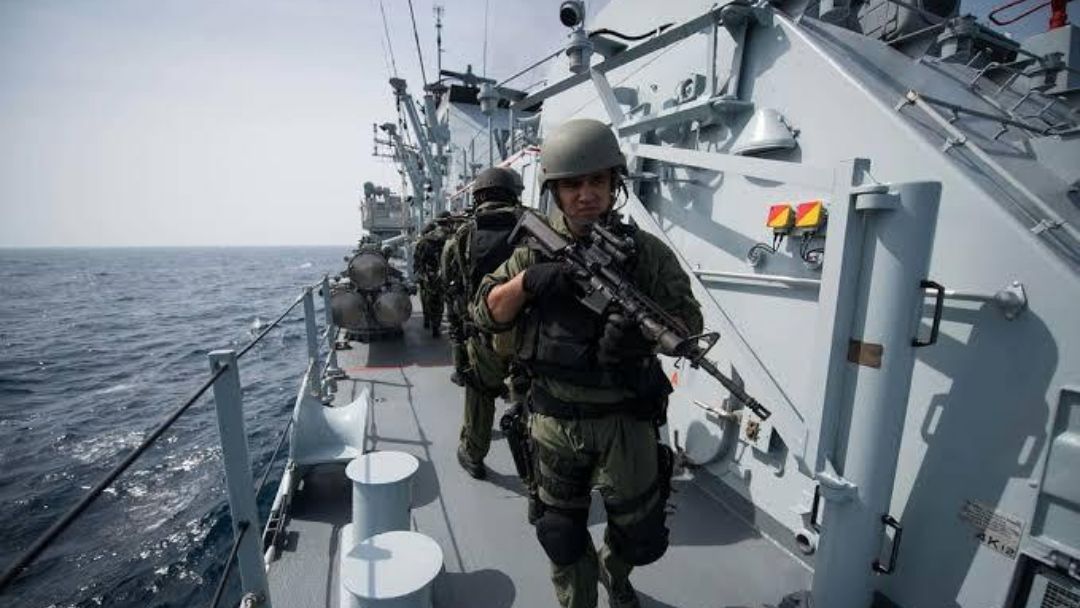
America has expressed its support to create a binding code of conduct along with other confidence-building measures.
Its defence treaty with the Philippines can introduce US in the potential China-Philippines conflict regarding natural gas deposits and fishing grounds in the area.
Great conversation with Singaporean Foreign Minister @VivianBala today to discuss our desire to uphold international law in the South China Sea and promote stability and prosperity in the Indo-Pacific.
— Secretary Pompeo (@SecPompeo) August 4, 2020
Philippine Defense Secretary Lorenzana said that the Philippines will not involve itself in naval exercises with other countries in the South China Sea,and it looks forward to developing friendly ties with China.
— Spokesperson发言人办公室 (@MFA_China) August 5, 2020
Good call today with Philippine Secretary of Foreign Affairs @teddyboylocsin to discuss our shared interests in the South China Sea. The U.S.-Philippine Alliance is vital to a free and open Indo-Pacific. #FriendsPartnersAllies
— Secretary Pompeo (@SecPompeo) August 6, 2020
Current Updates:
Australia has aligned with the US by formally rejecting China’s territorial and marine claims and declared to UN that the allegations have “no legal basis”. The declaration marks a dramatic shift in Australia’s position which had previously refrained from interfering and urged all claimants to resolve matters following international law, showcasing the country’s deteriorating ties with China.
Trilateral exercises between the US, Australia and Japan are in process to counter the ambitious Chinese claims and India is likely to join them as is apparent from its crucial Malabar naval exercises.
Chinese reports suggest an advanced planning of establishing an Air Defense Identification Zone (ADIZ) over the disputed territory to monitor and control foreign aircraft, as that introduced in the East China Sea in 2013.
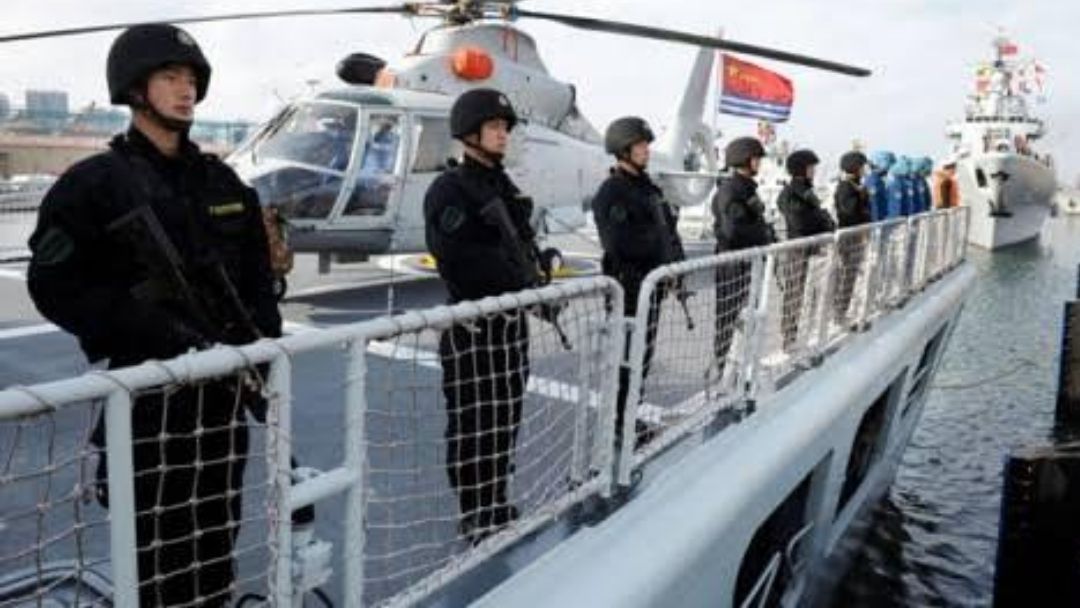
Experts are fearing a face-off between the American and Chinese superpowers and the only possible ray of hope in preventing the enormous consequences may depend on the possibility of restarting dialogues between the two militaries.






One Comment